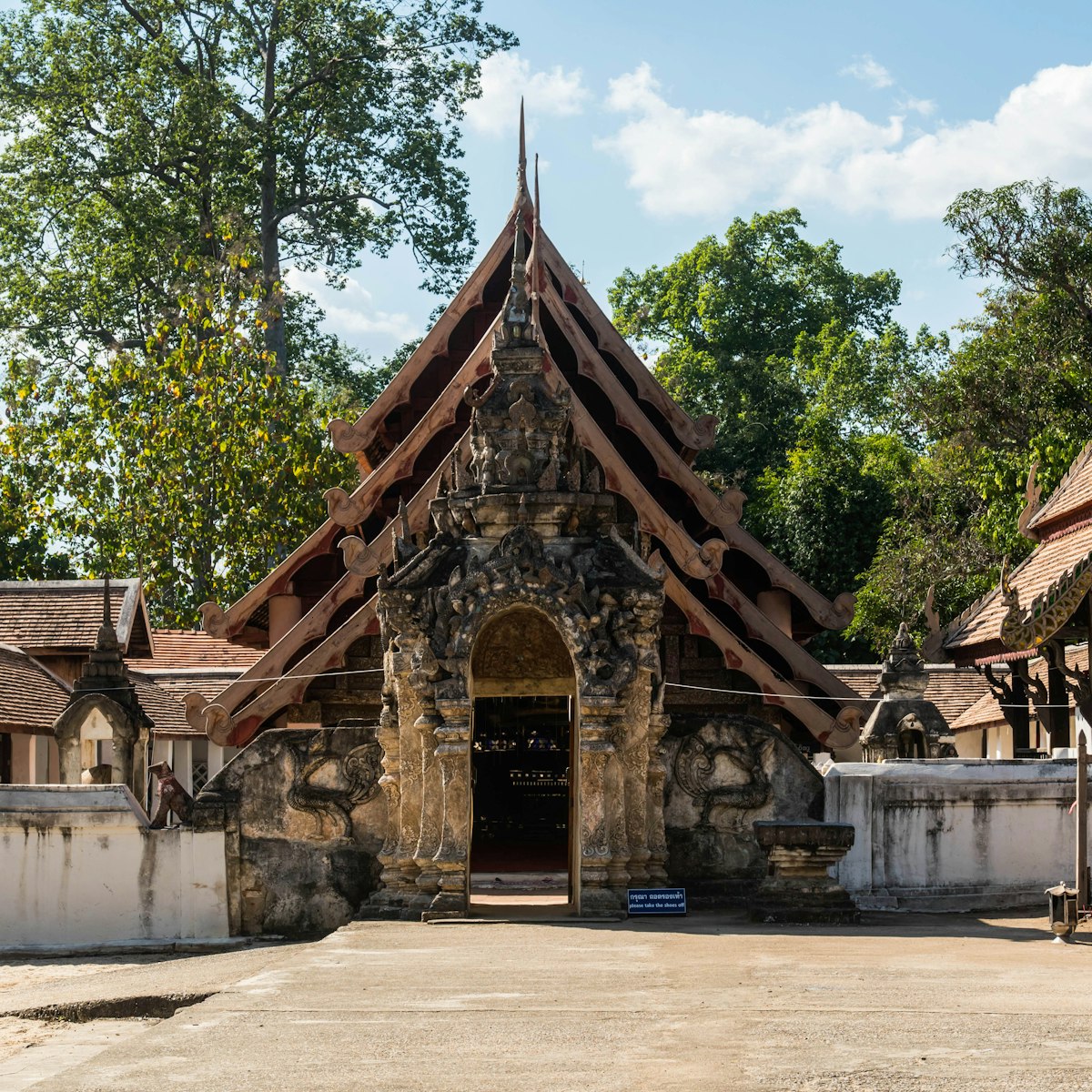This ancient Buddhist temple compound has several interesting religious structures, including what is arguably the most beautiful wooden Lanna temple in Northern Thailand, the open-sided Wihan Luang. Dating back to 1476 and thought to be the oldest standing wooden structure in the country, the impressive wí·hăhn (sanctuary) features a triple-tiered wooden roof supported by immense teak pillars and early-19th-century Jataka murals (showing stories of the Buddha’s previous lives) painted on wooden panels around the inside upper perimeter.
A huge, gilded mon·dòp (the small square-sided building with a spire) in the back of the wí·hăhn contains a Buddha image cast in 1563.
The small and simple Wihan Ton Kaew, to the north of the main wí·hăhn, was built in 1476, while the tall Lanna-style chedi (stupa) behind the main wí·hăhn, raised in 1449 and restored in 1496, is 45m high.
Wihan Nam Taem, to the north of the chedi, was built in the early 16th century and, amazingly, still contains traces of the original murals, making them among the oldest in the country.
South of the main chedi, Wihan Phra Phut dates back to the 13th century and is the oldest structure in the compound.
Unfortunately, only men are allowed to see a camera obscura image of the wí·hăhn and chedi in the Haw Phra Phutthabaht, a small white building behind the chedi. The image is projected (upside down) onto a white cloth and clearly depicts the colours of the structures outside.
The lintel over the entrance to the compound features an impressive dragon relief, once common in Northern Thai temples but rarely seen today. This gate allegedly dates to the 15th century.
In the arboretum outside the southern gate of the wát there are now three museums. One displays mostly festival paraphernalia and some Buddha figures. Another, called House of the Emerald Buddha, contains a miscellany of coins, banknotes, Buddha figures, silver betel-nut cases, lacquerware and other ethnographic artefacts, along with three small, heavily gold-leafed Buddhas placed on an altar behind an enormous repoussé silver bowl. The third, a small museum, features shelves of Buddha figures, lacquered boxes, manuscripts and ceramics, all well labelled in Thai and English.
Wat Phra That Lampang Luang is 18km southwest of Lampang in Ko Kha. To get here by public transport from Lampang, flag a blue eastbound sŏrng·tăa·ou (passenger pick-up truck; 20B) on Th Boonyawat. From the Ko Kha sŏrng·tăa·ou stop, it’s a 3km chartered motorcycle taxi ride to the temple (60B). Alternatively, you can charter a sŏrng·tăa·ou from Lampang for 400B, or taxis will take you here and back for around the same price.
If you’re driving or cycling from Lampang, head south on Th Phahonyothin/AH2 and take the Ko Kha exit, then follow the road over a bridge and bear right. Follow the signs and continue for 3km over another bridge until you see the temple on the left.


